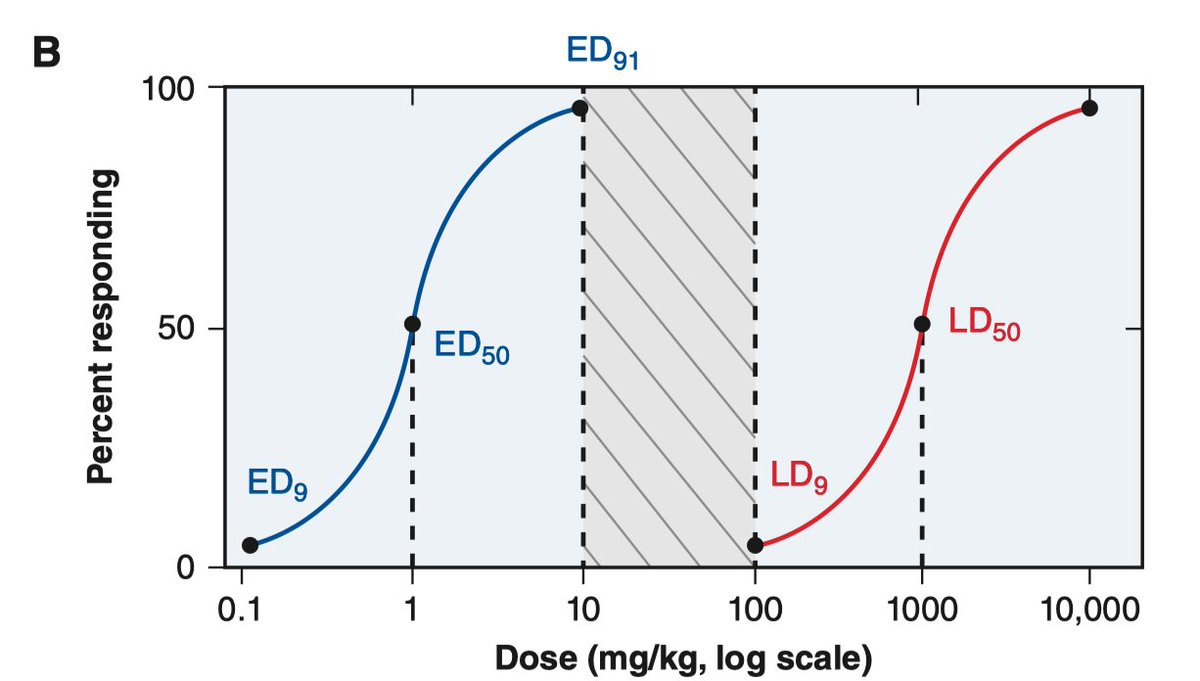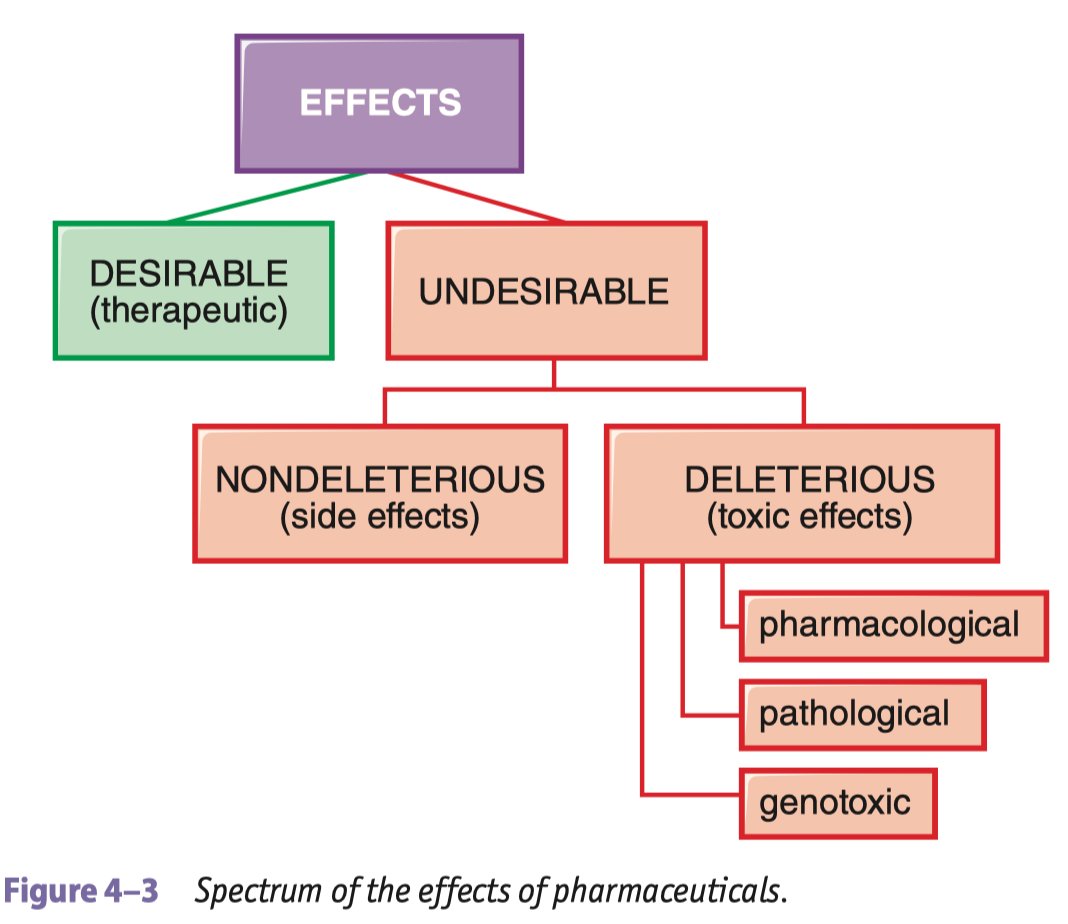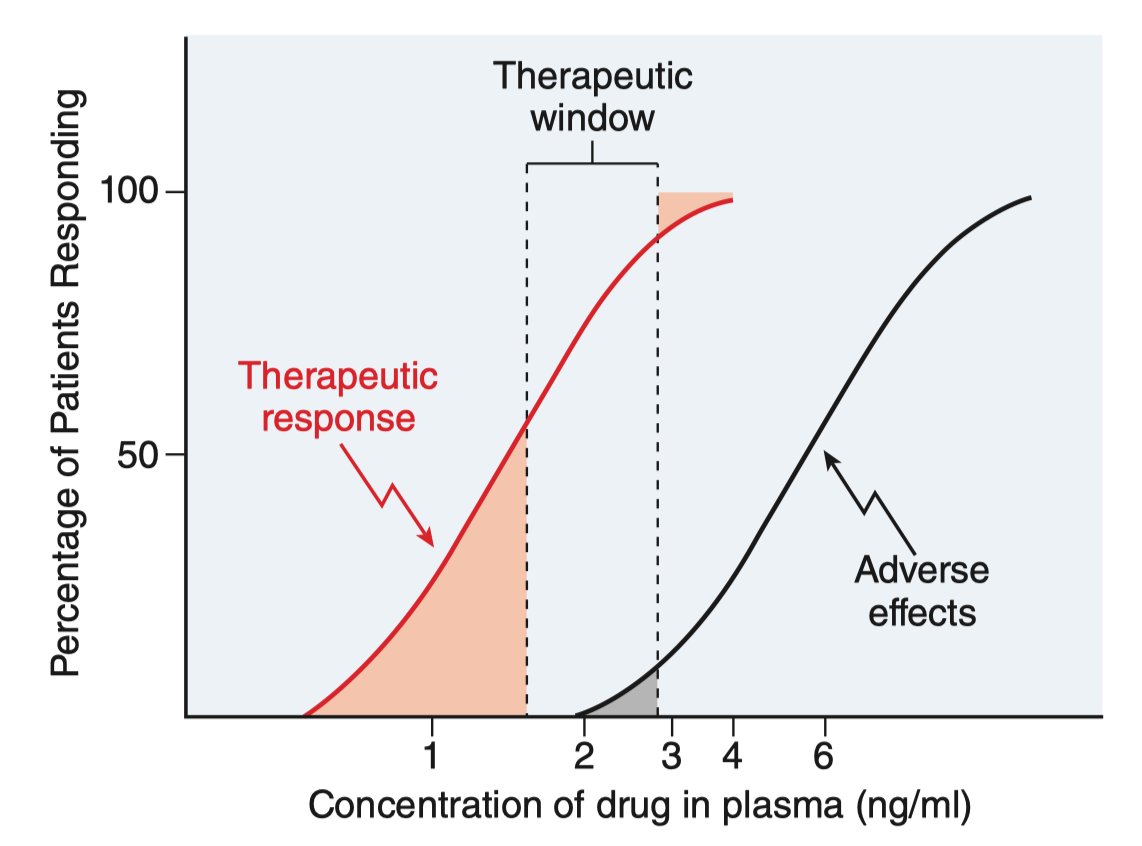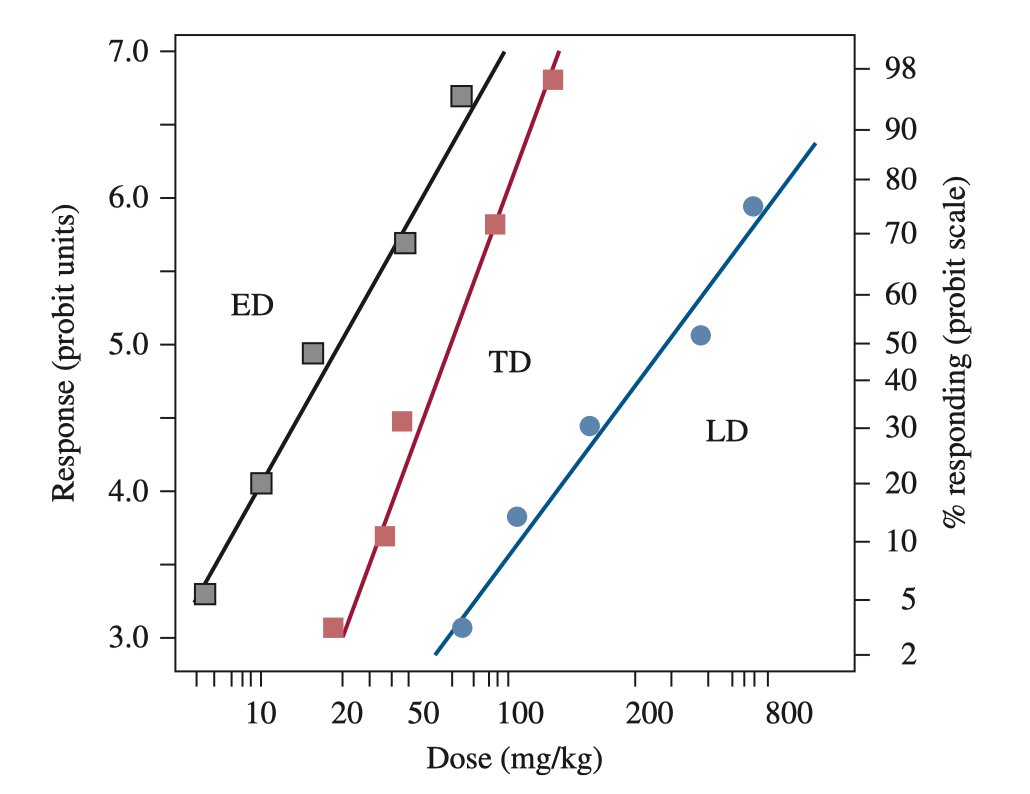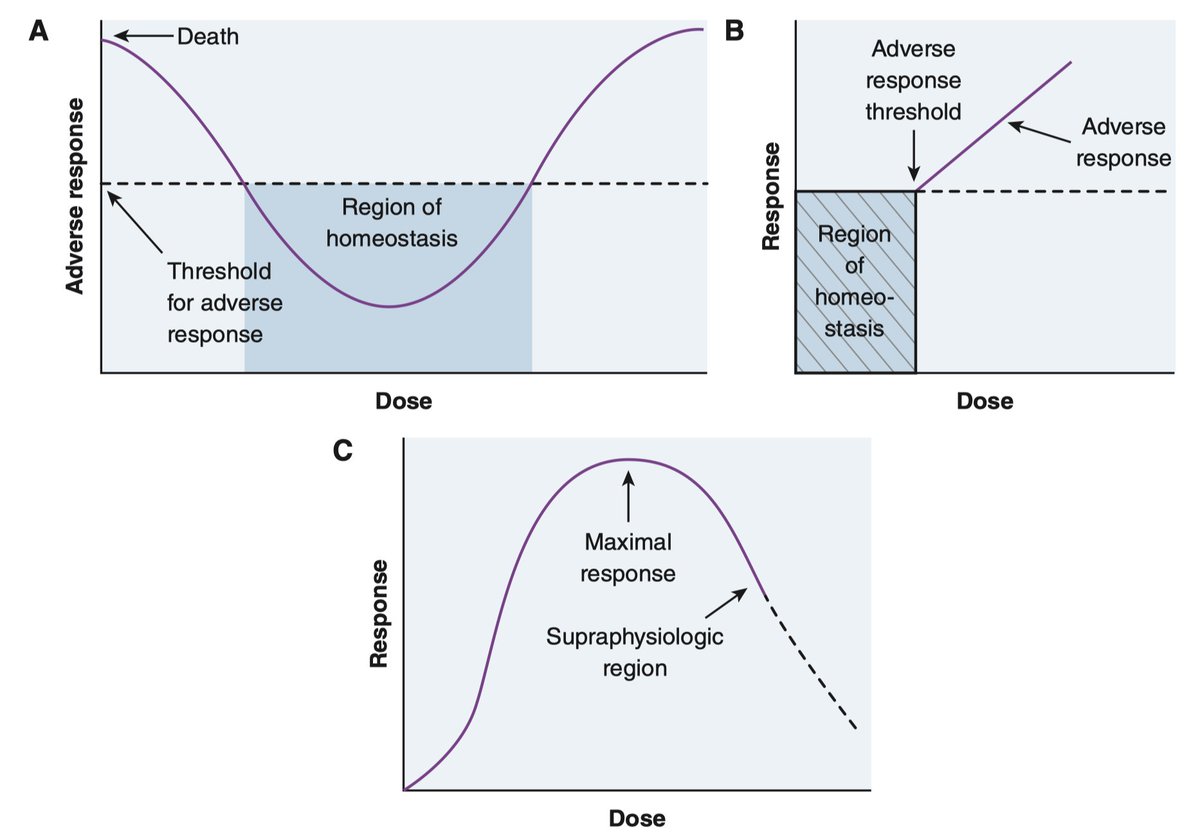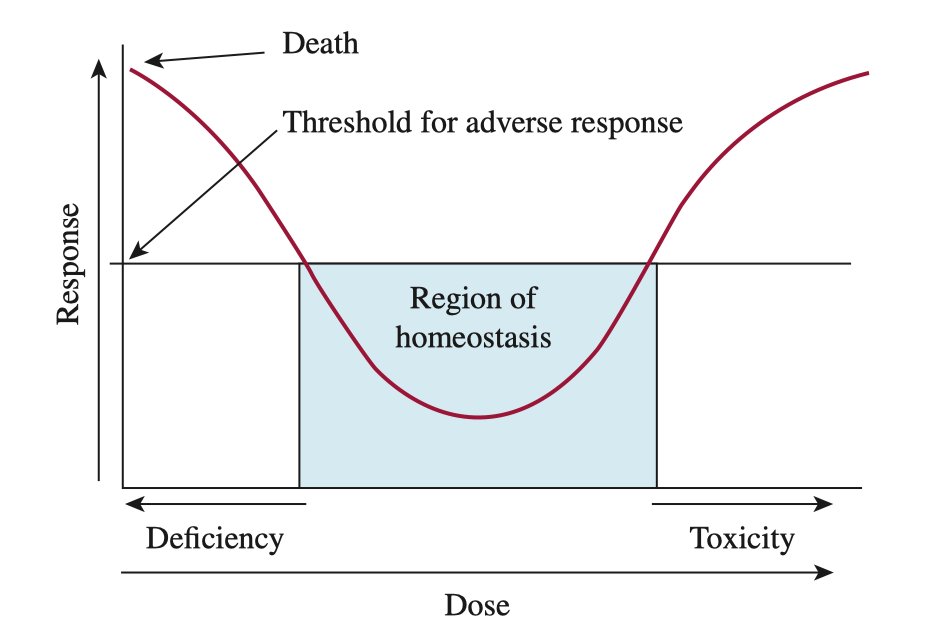Alrighty Twitter, we need to have a really important conversation about what toxins are and some of the basics of toxicology because lives are being endangered by these misperceptions.
Firstly:
Toxin- a poisonous substance with a biological origin e.g. snake venoms, aflatoxin B1, laetrile
Toxicant- a poisonous substance of synthetic origin e.g. asbestos, elemental mercury, cadmium, DDT
There can be gray areas.
Toxin- a poisonous substance with a biological origin e.g. snake venoms, aflatoxin B1, laetrile
Toxicant- a poisonous substance of synthetic origin e.g. asbestos, elemental mercury, cadmium, DDT
There can be gray areas.
Formaldehyde is commonly classified as a toxicant because generally it is made industrially and derived from there. However, it is also part of one-carbon metabolism involved in the synthesis of amino acids and nucleotides in our cells. https://www.nature.com/articles/nature23481.pdf">https://www.nature.com/articles/...
Why does the difference matter?
https://discardstudies.com/2017/09/11/toxins-or-toxicants-why-the-difference-matters/
The">https://discardstudies.com/2017/09/1... significance of this distinction is actually illustrated quite well by our friend, formaldehyde.
https://discardstudies.com/2017/09/11/toxins-or-toxicants-why-the-difference-matters/
The">https://discardstudies.com/2017/09/1... significance of this distinction is actually illustrated quite well by our friend, formaldehyde.
Between all the mechanisms in the cell to handle formaldehyde-induced DNA damage, it& #39;s pretty hard for formaldehyde produced inside our own cells to cause cancer. In fact, formaldehyde isn& #39;t really a great carcinogen because it& #39;s such a reactive molecule.
For formaldehyde to cause cancer, it has to react with DNA, which is sealed within a compartment inside the cell- the nucleus. So formaldehyde has to somehow manage to get to the nucleus without reacting and then react just with the DNA- and DNA isn& #39;t all that reactive.
However, if you encounter formaldehyde via occupational exposure e.g. when it is used to mop floors and repeatedly inhaled, you will encounter far more of it than what you ordinarily make and eventually some of it could get into cells and cause damage beyond our repair abilities.
Thus when formaldehyde is a toxicant we can encounter far more of it and it can be deleterious to our health.
Toxicants can also be much more persistent in the environment and accumulate along the food chain e.g. DDT (though there& #39;s a lot of nuance to that one that& #39;s lost).
Toxicants can also be much more persistent in the environment and accumulate along the food chain e.g. DDT (though there& #39;s a lot of nuance to that one that& #39;s lost).
That said, a chemical does not behave differently based on whether or not it is natural or synthetic. The properties of the chemical are inherent to that chemical. It knows not how it came to be. It simply is.
Paracelsus gave us the most important rule in all of toxicology, sometimes called the first law of toxicology:
"All things are poison and nothing is without poison; only the dose makes a thing not a poison."
In other words, anything can be toxic.
"All things are poison and nothing is without poison; only the dose makes a thing not a poison."
In other words, anything can be toxic.
Substances can have complex interactions with the body, which can be used therapeutically. There are some standardized quantities to measure this, like the effective dose 50 (ED50) which gives the median effective dose.
Typically, at higher values, drugs start to exhibit toxic effects. The LD50 is the median lethal dose of a substance.
In the hypothetical curve above, the crosshatched region is a margin of safety between the lethal and therapeutic effects. But things are complicated.
In the hypothetical curve above, the crosshatched region is a margin of safety between the lethal and therapeutic effects. But things are complicated.
Generally there is a toxic dose between the effective and lethal dose where adverse effects occur but they are not fatal. This is typically quantified with the TD50 (the dose at which a toxic response occurs in 50% of a population).
Sometimes adverse effects arise in a nonmonotonic way (i.e. the trend isn& #39;t linear, constantly increasing or decreasing). There may be a middle level where adverse effects are avoided but deviating to either extreme is harmful.
A classic example of this is oxygen. Oxygen is imperative to our survival- but too much oxygen is also problematic. It can cause lung injury, DNA damage, inflammation, and in premature infants can lead to blindness. Vitamins also follow this pattern.
https://www.sciencedirect.com/science/article/pii/B9780323640688000158">https://www.sciencedirect.com/science/a...
https://www.sciencedirect.com/science/article/pii/B9780323640688000158">https://www.sciencedirect.com/science/a...
The goal of any treatment is to maximize therapeutic effects and minimize adverse effects. The space between these is known as the therapeutic window. This is the range in which a drug can be given safely- being well tolerated by most and having therapeutic effect in most.
Ideally, the therapeutic window is large so that there is a wide range over which a drug can be given safely. But that& #39;s not always the case. For example, warfarin has a fairly narrow therapeutic window. Patients on warfarin need regular monitoring of their blood clotting (INR).
Dose too low and the patient could develop a clot that results in a heart attack, stroke, or other acute thromboembolic event. Dose too high, and they could bleed inappropriately (they often do even at therapeutic levels).
In short- everything comes down to dose. There is no substance that is inherently toxic to the extent that a single molecule of it is dangerous (as far as I am aware). Similarly, there is no substance wherein infinitely large quantities would be perfectly safe.
But what about detoxes? If you make toxic formaldehyde, then surely your body is full of toxins and a detox can help, right?
No. Very much no. Incorrect. Absolutely wrong. Just a huge swing and a miss.
No. Very much no. Incorrect. Absolutely wrong. Just a huge swing and a miss.
If it were the case that we regularly made toxins and they just built up indefinitely, we would never survive to reproductive maturity and the species would have died out or never existed. We have multiple systems for handling toxic substances.
A major one is the liver, which is home to an extensive network of enzymes responsible for many metabolic processes which are known as phase 1 and phase 2 metabolism. Much of these serve to enhance the ease with which substances can leave the body.
For example, the metabolism can make the substance more soluble in our blood, which can make them easier to excrete via the kidneys. Kidneys have an extensive and very complex network of transporters designed to exclude substances we don& #39;t need and return all that we do.
For example, kidneys make every attempt to reabsorb any glucose (though if concentrations get too high- as with diabetes- some invariably ends up in the urine) but don& #39;t work nearly as hard for something like creatinine, a metabolic waste product.
If you had defects in any of the systems required to clear toxins, it would be a true medical emergency and you would not be in a fit state to consider which detox would be best to purchase.
Also as the Medtwitter King of Toxicology @RyanMarino pointed out:
If you have questions, call 1-800-222-1222
If you have questions, call 1-800-222-1222

 Read on Twitter
Read on Twitter